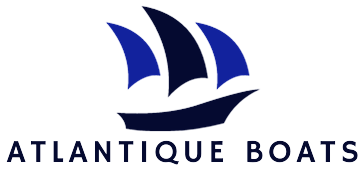The vastness of the ocean has always been a source of fascination and wonder for humanity. Its endless expanse, teeming with life and mystery, has captivated explorers and scientists alike for centuries. Among the countless questions that arise when contemplating the ocean, one that often arises is: how many boats are in the ocean? This seemingly simple query opens the door to a world of exploration, statistics, and a deeper understanding of our relationship with the vast blue expanse that covers over 70% of our planet’s surface.
As we embark on this exploration, we must first acknowledge the enormity of the task at hand. With an estimated surface area of over 139 million square miles, the ocean is a vast playground for human activity. From fishing vessels to cargo ships, sailboats to submarines, the range of boats that traverse the ocean’s waters is as diverse as the people who sail them. But just how many boats are out there, dotting the horizon and leaving trails in their wake? To answer this question, we will delve into the world of maritime data, uncovering fascinating insights about the sheer magnitude of the maritime industry and its impact on our planet. So, fasten your seatbelts, grab a life jacket, and join us on this journey as we dive into the depths of the ocean to discover how many boats truly call it home.
How Many Boats Are in the Ocean: A Comprehensive Guide
Welcome to our informative guide on determining the number of boats in the ocean. Whether you’re a curious individual or a researcher in the maritime industry, understanding the scale of boat presence in our oceans can provide valuable insights. In this article, we will walk you through the process of estimating the number of boats in the ocean, step by step. So, without further ado, let’s dive right in!
Step 1: Collecting Data Sources
The first step in determining the number of boats in the ocean is to gather relevant data sources. This can be a complex task as it involves collecting information from various organizations, databases, and research studies. Some of the primary sources of data include:
- Maritime authorities and regulatory bodies
- Shipping and port authorities
- Marine traffic monitoring systems
- Satellite imagery and remote sensing technologies
- Research institutions and academic studies
By combining data from these sources, we can obtain a comprehensive overview of the boat population in the ocean.
Step 2: Analyzing Vessel Registries
One of the key sources of information for estimating the number of boats in the ocean is vessel registries. These registries provide detailed records of boats that are officially registered and authorized to operate. Analyzing these registries can give us insights into the number of boats in specific regions or countries.
However, it’s important to note that not all boats are required to be registered, especially smaller recreational boats or those operating in remote areas. Therefore, while vessel registries provide valuable data, they may not capture the complete picture of the boat population in the ocean.
Step 3: Utilizing AIS Data
Automatic Identification System (AIS) technology plays a crucial role in tracking and monitoring boats in real-time. AIS transponders are installed on most commercial vessels and transmit information such as vessel position, speed, and heading. By utilizing AIS data, we can estimate the number of boats present in specific areas at any given time.
However, it’s important to note that not all boats are equipped with AIS transponders. Smaller vessels, such as fishing boats or recreational crafts, may not be required to have AIS installed. Thus, while AIS data provides valuable insights, it may not provide a complete representation of the entire boat population in the ocean.
Step 4: Remote Sensing Technologies
Remote sensing technologies, such as satellite imagery and aerial surveys, can also be employed to estimate the number of boats in the ocean. These technologies allow for the identification and counting of boats by capturing high-resolution images of the ocean’s surface.
By analyzing these images, researchers can identify and count boats, providing valuable data on their distribution and density. However, it’s important to note that remote sensing technologies have limitations, particularly when it comes to detecting smaller boats or those operating in crowded areas.
Step 5: Data Integration and Estimation
Once the data from various sources has been collected, it needs to be integrated and analyzed to estimate the number of boats in the ocean accurately. This involves employing statistical methods, data modeling, and extrapolation techniques to account for missing or incomplete data.
It’s important to acknowledge that determining the exact number of boats in the ocean is challenging due to the vastness of the ocean itself and the limitations of available data sources. Nonetheless, by combining multiple data sets and employing advanced analytical techniques, researchers can provide reasonably accurate estimates of the boat population.
By following these steps and utilizing various data sources, researchers and organizations can gain valuable insights into the number of boats in the ocean. Understanding this information can help inform policy decisions, environmental conservation efforts, and maritime planning for a sustainable future.
Frequently Asked Questions
Here are some commonly asked questions about the number of boats in the ocean:
Question 1: How many boats are in the ocean?
The exact number of boats in the ocean is difficult to determine as it constantly changes. However, it is estimated that there are millions of boats worldwide. These include various types of vessels, such as fishing boats, recreational boats, cargo ships, and cruise liners.
The number of boats in the ocean is influenced by factors such as global trade, tourism, and fishing activities. Different regions and countries have varying concentrations of boats, with coastal areas and major shipping routes having higher numbers. It is important to note that this estimate does not include smaller boats like kayaks, canoes, and dinghies, which are also used in the ocean.
Question 2: How do scientists track the number of boats in the ocean?
Tracking the number of boats in the ocean is a challenging task. Scientists and researchers use various methods to estimate this figure. One commonly used approach is through satellite imagery and remote sensing technology. Satellites equipped with high-resolution cameras can capture images of the ocean and identify boats visible on the surface.
In addition to satellite imagery, scientists also rely on vessel tracking systems, which use Automatic Identification System (AIS) data. AIS is a tracking system that allows boats to broadcast their positions, course, and speed. By analyzing AIS data from different sources, scientists can get a better understanding of the distribution and movement of boats in the ocean.
Question 3: Are there more boats in certain parts of the ocean?
Yes, the number of boats in the ocean is not evenly distributed and varies across different parts of the world. Coastal areas and regions with high maritime activity, such as major ports and shipping lanes, tend to have a higher concentration of boats. These areas are often hubs for trade, fishing, and tourism, which require a significant number of boats.
Additionally, some regions with favorable weather conditions and natural features like sheltered bays and harbors attract more boats. On the other hand, remote and less accessible parts of the ocean may have fewer boats due to limited human activity and logistical challenges.
Question 4: What are the environmental impacts of a large number of boats in the ocean?
The presence of a large number of boats in the ocean can have various environmental impacts. One significant concern is pollution from boat emissions, particularly from diesel-powered engines. These emissions contribute to air pollution and can have detrimental effects on marine and coastal ecosystems.
Boats can also cause physical damage to marine habitats, such as coral reefs and seagrass beds, through anchor drops or accidental collisions. Moreover, improper disposal of waste, including plastic and other debris, can lead to marine pollution and harm marine life. Sustainable boating practices and regulations are essential to minimize these environmental impacts.
Question 5: How does the number of boats in the ocean affect marine wildlife?
The presence of boats in the ocean can have both direct and indirect impacts on marine wildlife. Direct impacts include collisions between boats and marine animals, which can result in injuries or fatalities. Noise pollution from boat engines and underwater sonar systems can also disrupt marine species’ communication, feeding, and migration patterns.
Indirectly, the number of boats in the ocean affects marine wildlife through habitat degradation and disturbance. Boat traffic can disturb sensitive habitats, such as breeding grounds or feeding areas, potentially causing stress and displacement of marine species. Conservation efforts and responsible boating practices are crucial to mitigate these impacts and protect marine wildlife.
In conclusion, the question of how many boats are in the ocean is a fascinating one that opens up a world of possibilities. While it may seem like a simple query, delving deeper into the topic reveals the complexity and vastness of our oceans. From the bustling ports of major cities to the isolated fishing villages, boats of all shapes and sizes traverse the waters, each with its own story and purpose. Yet, despite our best efforts to quantify and track these vessels, the sheer magnitude of the ocean and the constant movement of boats make it difficult to obtain an exact count. However, what we can be certain of is that the number of boats in the ocean is a constantly changing figure, reflecting the dynamic nature of our maritime world.
As we ponder the question of how many boats are in the ocean, it is important to recognize the significance of these vessels in our lives. Boats serve as vital conduits of trade, transportation, and exploration, connecting distant shores and fostering global connections. They are the lifeline of coastal communities, providing livelihoods and sustenance. Moreover, boats symbolize human ingenuity and our relentless pursuit of adventure and discovery. From ancient times to the present day, boats have played a pivotal role in shaping our history and culture.
In conclusion, the number of boats in the ocean remains elusive, but the impact and importance of these vessels cannot be overstated. They are not merely floating objects on the water; they represent our interconnectedness, our spirit of exploration, and our constant quest for progress. As we look out onto the vast expanse of the ocean, let us marvel at the countless boats that navigate its waters, carrying with them the hopes and dreams of humanity.

















